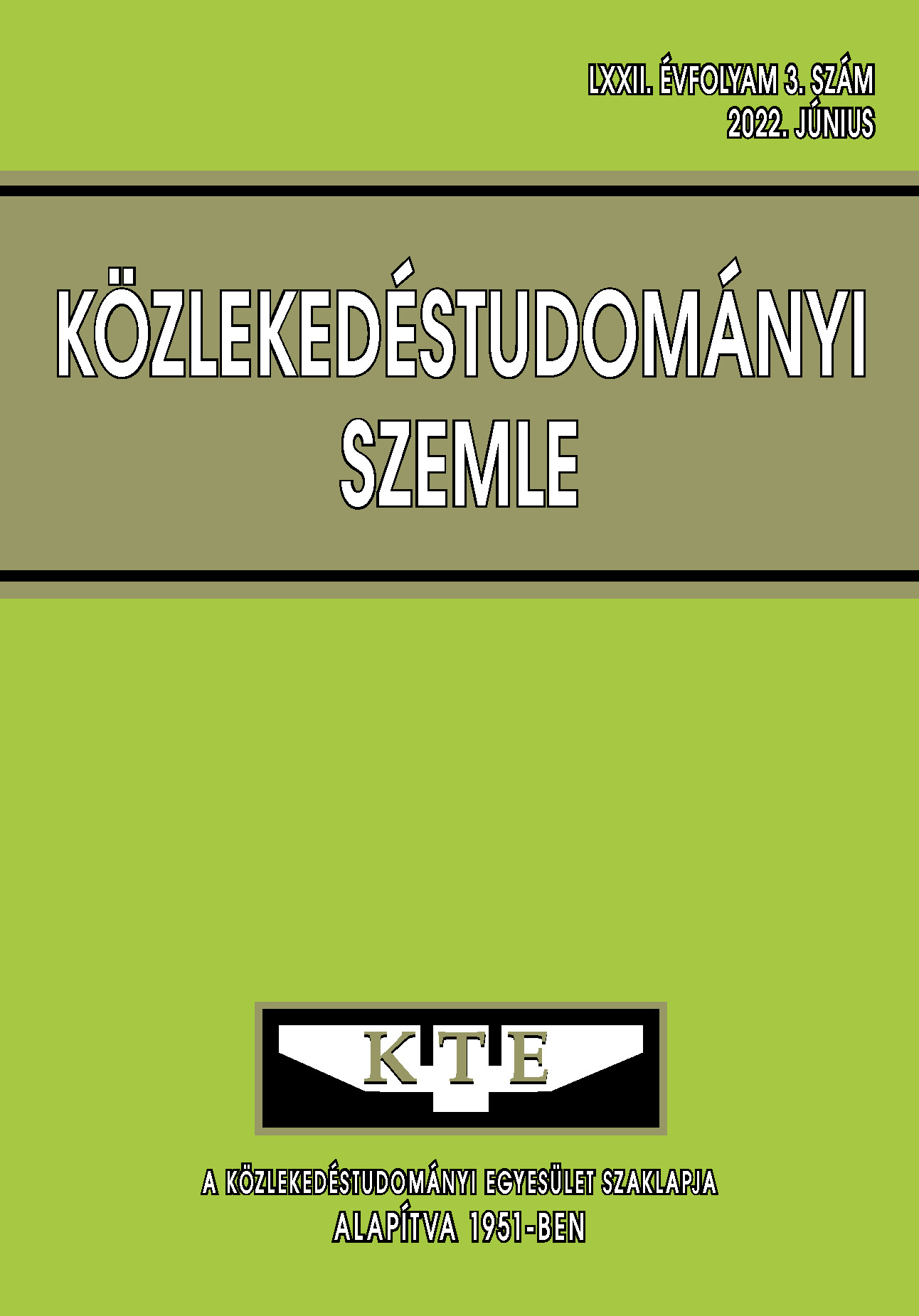Szállítási lánc környezeti vizsgálata különös tekintettel a lokális termelés előtérbe helyezésével
Absztrakt
Napjaink élelmiszer rendszerének problémáit definiálva, beleértve az élelmiszer-biztonságot, egészséges táplálkozást, a megfizethetőséget és szociális, valamint környezeti hatásait, annak externáliáit feltárva mutatják be, hogy valójában milyen áron jut az egészséges élelmiszer az asztalunkra.
Hivatkozások
Bartus G., Szalai Á. (2014): Környezet, jog, gazdaságtan, környezetpolitikai eszközök, környezet-gazdaságtani modellek és joggazdaságtani magyarázatok, Pázmány Press, Budapest
British Standard Insitute (2018): The Guide to PAS 2050: How to carbon footprint your products, identify hotspots and reduce emissions in your supply chain, United Kingdom
Gardner B., Global Food Futures (2013): Feeding the World in 2050, Bloomsbury, (London – New Delhi – New York - Sydney)
ECTA (2011): Guidelines for Measuring and Managing CO2: Emission from Freight Transport Operations, Issue 1, p.18, Belgium
Európai Unió (2016): Vasúti árufuvarozás az Unióban: az ágazat még nincs sínen. Európai Számvevőszék, Az Európai Unió Kiadóhivatala, Luxembourg
Holden E, Høyer K. G. (2005): The ecological footprint of fuels. Tranportation Research Part D Transport and Environment 10(5):395-403, Norway, DOI: https://doi.org/cqthk8
FAO, IFAD, UNICEF, WFP and WHO (2018): The State of Food Security and Nutrition in the World 2018. Building climate resilience for food security and nutrition. Rome, FAO. Licence: CC BY-NCSA 3.0 IGO.
Medvéné Szabad Katalin (2013): A fenntart ható fejlődés gazdaságtana. Budapest, Budapesti Gazdasági Főiskola
Paxton, A (1994): The Food Miles Report: The dangers of long-distance food transport. SAFE Alliance, London, UK.
Poore, J., & Nemecek, T. (2018): Reducing food’s environmental impacts through producers and consumers. Science, 360(6392): 987-992, Egyesült Királyság, DOI: https://doi.org/gdm4z3
Tánczos L., Török Á. (2007): The linkage between climate change and energy consumption of Hungary in the road transportation sector. Transport 22 : 2 pp. 134-138. , 5 p. DOI: https://doi.org/hrh3
Schippel, J., Leisner, I., Kaspersen, P., Madsen, A.K. (2008): The Future of European Long-Distance Transport, Scenario Report (Deliverable 5), STOA, ETAG, p.131
Wiedmann, T. and Minx, J. (2008): A Definition of 'Carbon Footprint'. In: C. C. Pertsova, Ecological Economics Research Trends: Chapter 1, pp. 1-11, Nova Science Publishers, Hauppauge NY, USA.
Ecological Footprint per Capita 2019(2019) https://worldmapper.org/maps/grid-ecologicalfootprint-2019-population/ 2020.02.20
Fiat Ducato autóbusz adatai: https://www.fiatprofessional.com/content/dam/fiatprofessional/hu/katalog/Ducato_ARUSZALLITO_katalog_PREVIEW.pdf 2020.04.19
Fiat Ducato autóbusz adatai: https://www.fiatprofessional.com/content/dam/fiatprofessional/hu/brochure/Ducato_Merci_Cat_52p_HU_web_2018.pdf 2020.04.19
GoF Hungary Kft, Gluténmentes zabpehely https://www.avenagofit.com/ 2020.05.13
Hilary Greenbaum and Dana Rubinstein (2012) Who made that granola, New York Times, USA https://www.nytimes.com/2012/03/25/magazine/who-madethat-granola.html?auth=login-google 2020. 04. 30
Nébih (2019) Sejti mennyi élelmiszert pazarol? Most grammra pontosan megtudja! https://portal.nebih.gov.hu/-/sejti-mennyielelmiszert-pazarol-most-grammrapontosan-megtudhatja 2020.03.21
Mercedes Benz kamion adatai: https://media.daimler.com/marsMediaSite/en/instance/ko/New-Mercedes-Benz-Actrosin-the-Guinness-Book-of-Recordsthe-worlds-most-economical-seriesproduction-truck.xhtml?oid=9913603 2020.04.19
Mercedes Benz kamion adatai http://www.focusontransport.co.za/wp-content/uploads/2018/02/Mercedes-Benz-Truck-Specifications.pdf 2020.04.19
Az elektronikusan megjelenő cikkek nyílt hozzáféréssel rendelkeznek (OJS), online ingyenesen elérhetők és letölthetők. A cikkek szerzőit nem terheli megjelentetési vagy kiadási költség (APC). Felhasználóknak joguk van a cikkek olvasására, letöltésére, másolására, kinyomtatására, valamint azokban való keresésre, vagy a teljes szöveg linkkel történő megosztására.
A szerzőknek nyilatkozniuk kell arról, hogy beadványukat korábban nem tették közzé más folyóiratban, a pénzügyi támogatás feltüntetésre került és a hivatkozások listája teljes és pontos, beleértve az URL-ek és a DOI-k specifikációját is (ha rendelkezésre állnak). A cikktervezet beadásakor minden szerző jóváhagyja a benyújtott változatot. A szerzők garantálják, hogy a cikk az ő eredeti művük. A szerzők kötelesek részt venni a szakértői értékelés folyamatában, követni a bírálók tanácsait, betartani az előírt határidőket, és amennyiben előfordulnak, kötelesek visszavonni a benyújtást vagy kijavítani a hibákat.
Minden beadott cikket szakértői értékelés alá kerül, ahol a szerkesztők független értékelést kérnek legalább egy szakértőtől, ügyelve arra, hogy a bíráló(k)nak ne legyen összeférhetetlensége a szerzőkkel. A végső döntést a főszerkesztő hozza meg, aki figyelembe veszi az értékeléseket és a szerkesztők javaslatait. A szerkesztők és a lektorok bizalmasan kezelik a beadványt.
A kiadó és a szerkesztők elkötelezettek a magas etikai normák betartása mellett, és megakadályozzák azokat a publikációkat, amelyekben kutatási visszaélés történt. Az ilyen etikai kérdésekben a COPE irányelveit követik.
A szerzők fenntartják a szerzői jogokat, és megadják a folyóiratnak az első közzétételi jogot a Creative Commons Licenc alapján (https://creativecommons.org/licenses/by-nc-nd/4.0), amely lehetővé teszi mások számára, hogy megosszák a művet, elismerve a mű szerzőségét és a folyóiratban való első közzétételt.
A folyóirat archiválja az összes megjelent cikket, és a folyóirat tulajdonosa, a Közlekedéstudományi Egyesület továbbra is üzemelteti az adatbázist abban az esetben is, ha a folyóirat kiadása megszűnik.















